What Are SDH Subtitles and Do You Need Them?
What are SDH subtitles and how do they vary from non-SDH subtitles and closed captions? In this article, we take a deep dive into subtitles for the deaf and hard of hearing and why they're a better accessibility measure for social video.

Subtitles aren’t the accessibility quick fix they’re made out to be. In fact, they’re the bare minimum.
The truth is that standard subtitles often don’t meet the needs of deaf and hard of hearing viewers because they don’t contain any information about other audio elements apart from the spoken audio. And with terms like “caption” and “subtitles” being used interchangeably in many online spaces, it’s unclear how accessible your content might actually be.
So, how do you produce more accessible video content? Are automatic subtitles enough? What about closed captions?
When it comes to social media video, the most robust form of captions are SDH subtitles. Let’s take a look at what SDH subtitles are, how they differ from other captioning methods, and why they’re the best option for social media specifically.
What are SDH subtitles?
SDH subtitles are a type of subtitles that perform the same function as true closed captions but with the presentation of classic subtitles.
What does SDH mean?
SDH stands for “subtitles for the deaf and hard of hearing.”
Like closed captions, SDH subtitles are meant for viewers who cannot hear or have difficulty hearing the spoken audio in a video. SDH subtitles include all spoken audio in the video as well as non-verbal cues, indicating background noises like laughter, music, and diegetic sound effects such as a door opening or approaching footsteps.
Who needs SDH subtitles?
While any viewer can watch a video with SDH subtitles instead of regular subtitles, they are specifically intended for viewers in the deaf and hard of hearing communities.
The term SDH originated in North America with the advent of DVD media as an alternative to traditional closed captioning solutions. They are an acceptable form of captioning for television and streaming, as long as the SDH subtitles follow the FCC requirements for closed captioning:
- Accurate: The subtitles match the spoken words and provide as much information as possible about background noise, music, etc.
- Synchronous: The subtitles align with the audio (spoken and non-spoken) as closely as possible while being displayed at a legible pace.
- Complete: The subtitles run from the beginning of the video to the end of it.
- Properly placed: The subtitles don’t block important visual content, overlap each other, or run off the edge of the screen.
An example from W3C of how dangerous inaccurate subtitles can be:
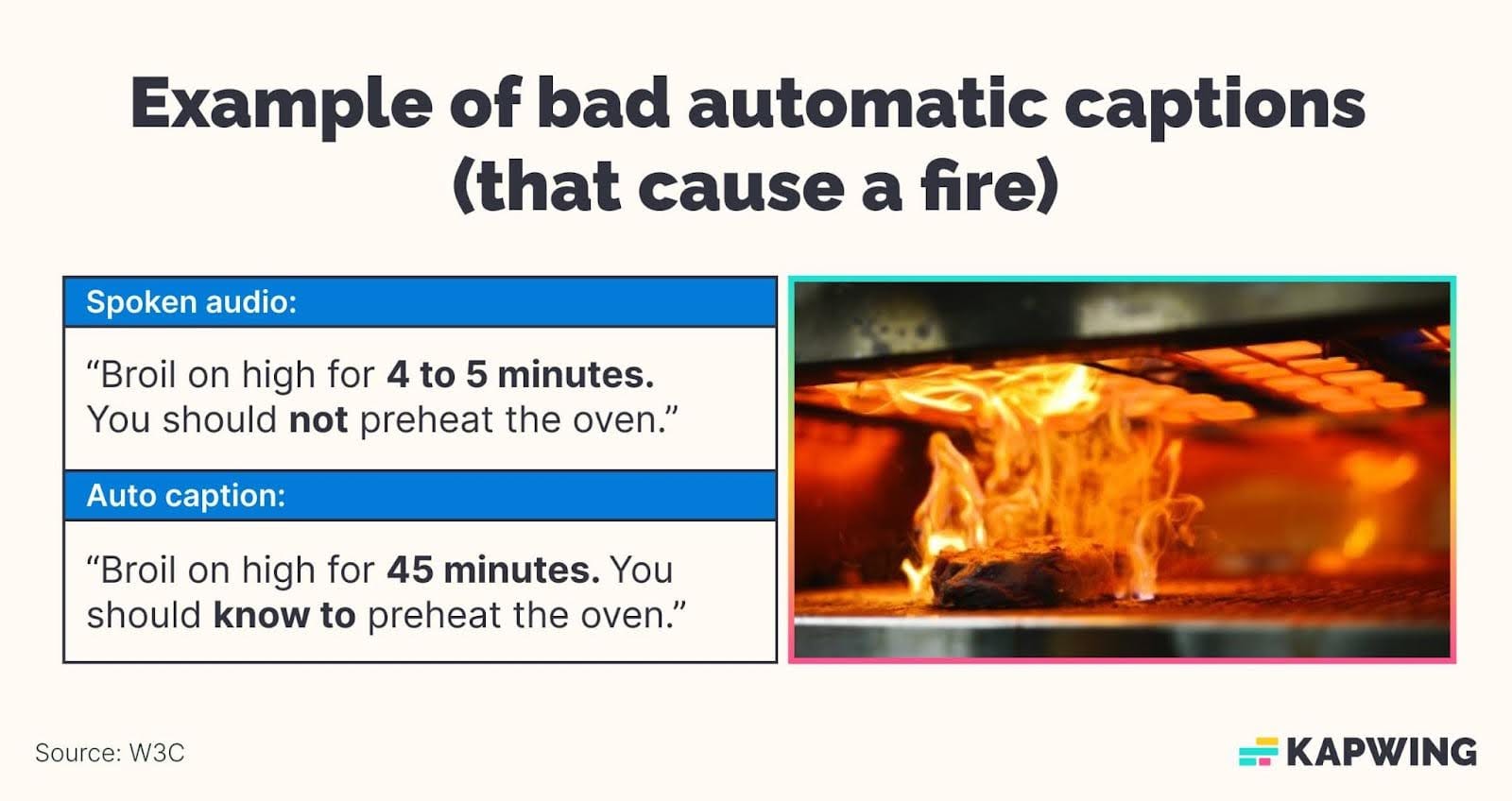
How are SDH subtitles different from other subtitles/captions?
SDH subtitles are a specific kind of subtitle, distinct from non-SDH subtitles and closed captions. Let’s take a look at key differences and how each type of subtitle/caption varies.
Non-SDH subtitles
These are your standard subtitles that do not include any information about background sounds or music. Most automatic captions on social media fall into the category of non-SDH subtitles, as they only transcribe the video's spoken dialogue and can be customized (styling, animation, font, etc.).
Use cases for non-SDH subtitles
Regular subtitles with just the spoken audio are typically added for viewers who can hear the audio but need subtitles for one of the following reasons:
- They don’t speak the same language as the language spoken in the video. Translated subtitles are often added to videos in addition to or as an alternative to dubbed audio. They are different from translated closed captions or subtitles for the deaf, as they only translate the spoken language.
- They have the volume on their device turned down or off. Many viewers watch mobile video with the sound turned off, especially in public settings.
- They find subtitles helpful for focusing on the spoken audio in the video. Newer data suggests that subtitles are increasingly helpful for concentration and information retention.
An example of translated foreign language subtitles:
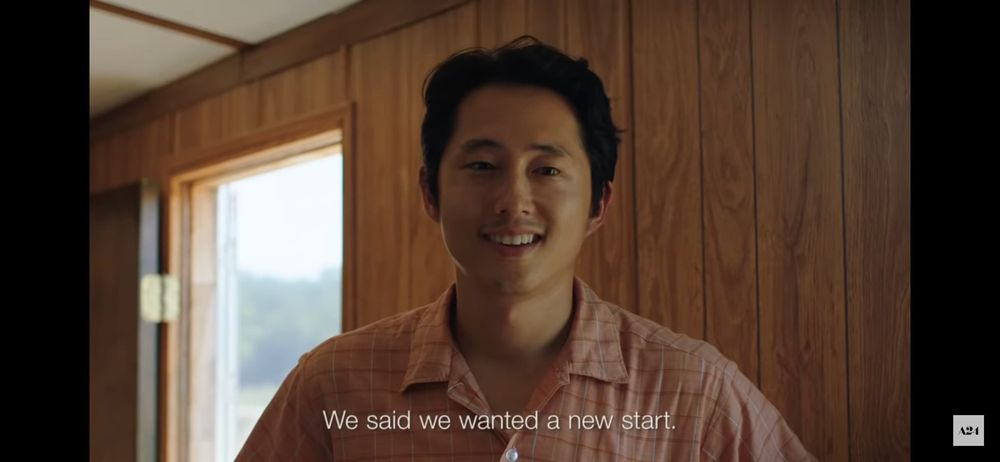
In the film Minari, dialogue happens in two different languages: Korean and English. For English-speaking audiences, the Korean dialogue is subtitled in English.
How are non-SDH subtitles formatted?
Unlike closed captions, there’s a level of stylistic flexibility when adding non-SDH subtitles to a video. You can choose your subtitle font, color, and placement. This is particularly true if you permanently burn the subtitles into your video, rather than upload your subtitle file to the video platform hosting your video.
While non-SDH subtitles are not specifically designed for deaf and hard of hearing viewers, accessibility is still an important consideration. When choosing your subtitle font, be sure to use an easily legible font and high contrast colors so that your viewers will be able to read the subtitles.
Non-SDH subtitles can also be exported as a standard subtitle file type and uploaded with your video file. The styling and placement of these traditional subtitles will be dependent on the individual video platforms.
SRT, VTT, and TXT files all support non-SDH subtitles.
Closed captions
Closed captions contain both subtitles of the spoken audio and cues to indicate sound effects, background noise, or music. When talking about subtitles or captions, “closed” means that the viewer can turn the captions on or off. Open captions cannot be turned off and are always on. Sometimes open captions are referred to as permanent subtitles.
Many automatic caption tools on social media, like TikTok captions and YouTube’s auto cc, are labeled as closed captions or CC when they’re actually closed non-SDH subtitles.
Use cases for closed captions
True closed captions are the industry standard for accessible captioning video content for viewers in the Deaf/deaf and hard of hearing community, which includes:
- Viewers who are deaf. Deaf spelled with a lowercase ‘d’ is used to refer to anyone who cannot hear. People who are deaf may have lost hearing later in life and may or may not know and use sign language as a second language.
- Viewers who are Deaf. When capitalized, Deaf refers to someone who has been deaf or mostly deaf their whole life and whose first language is sign language.
- Viewers who are hard of hearing. Hard of hearing refers to anyone who experiences some level of hearing loss but is not wholly deaf. People who are hard of hearing may or may not know and use sign language.
For television and streaming services, CC must meet the standards and requirements set out by the FCC for video accessibility.
How are closed captions formatted?
Closed captions are visually pretty standardized: white text or words on a gray or black background, typically centered in the lower bottom third of the video. If that placement will block important visual information, though, you can adjust the timed placement of the captions throughout the video for the best viewing experience.
This is different for 708 standard closed captions, which allow the user to customize certain aspects of the captions, like font size, color, etc. 708 closed captions are more accessible to viewers with some degree of vision loss.
Whether you’re using 608 or 708 closed captions, there are several best practices to follow when writing the caption text itself to provide the most information and clarity to the viewer as possible. For example:
- Use brackets to indicate captioned words that are not dialogue, like sound effects or background audio.
- Identify the speaker by name or role when it’s unclear who is speaking. This is often the case when someone is speaking offscreen or if there is overlapping speech.
- Use music notes to indicate the name and artist of any background music playing, if known. If unknown, describe the music, e.g., [eerie music plays].
Here’s an example of closed captions in 2023’s Barbie. The captions indicate that the on-screen characters are singing the lyrics, rather than speaking, with music notes.
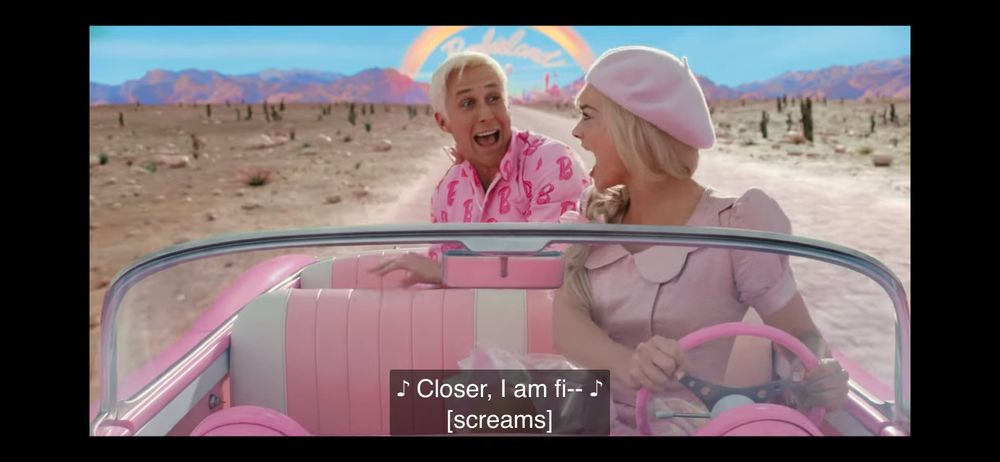
When both characters scream, that’s denoted in brackets.
All of these additional details must be added to the caption file manually, as they won’t appear in a standard transcript of a video’s audio. SRT, VTT, SCC, and SMPTE-TT are some of the more common closed caption file types used.
SDH subtitles
So, how do SDH subtitles vary from the options above?
Well, they’re kind of a blend of the two. SDH subtitles provide the non-spoken audio information of closed captions while allowing for some of the visual customization of standard subtitles.
Use cases for SDH subtitles
SDH subtitles can be used in any situation where you would normally use closed captions OR non-SDH subtitles, like:
- Streaming services. Some streaming platforms, like Netflix, cannot support closed captions because of issues with HDMI encoding. SDH subtitles are supported through HDMI, making them a great option for streaming content.
- YouTube videos. YouTube’s auto CC doesn’t actually add any non-spoken audio cues to the captions, so uploading videos with SDH subtitles will make your YouTube channel more accessible.
- Social media videos. Many social media platforms, like Threads, Reels, and TikTok, don’t support closed caption file upload, so adding SDH subtitles to your social videos is a way to provide that extra accessibility for viewers.
How to add SDH subtitles to your videos
With the continued improvement of automatic transcription software, it’s easier than ever to add fast, accurate non-SDH subtitles. SDH subtitles, though, like closed captions, require a degree of manual transcription.
For longer videos, we recommend using an SDH or closed captioning service. This is particularly important if your videos need to meet FCC requirements.
For shorter videos, it’s possible to create the SDH subtitles yourself. The easiest way to do this without having to learn SRT or VTT formatting, is to use subtitle software like Kapwing’s automatic subtitler, which allows you to edit the captions manually.
First, generate the automatic subtitles for your video.
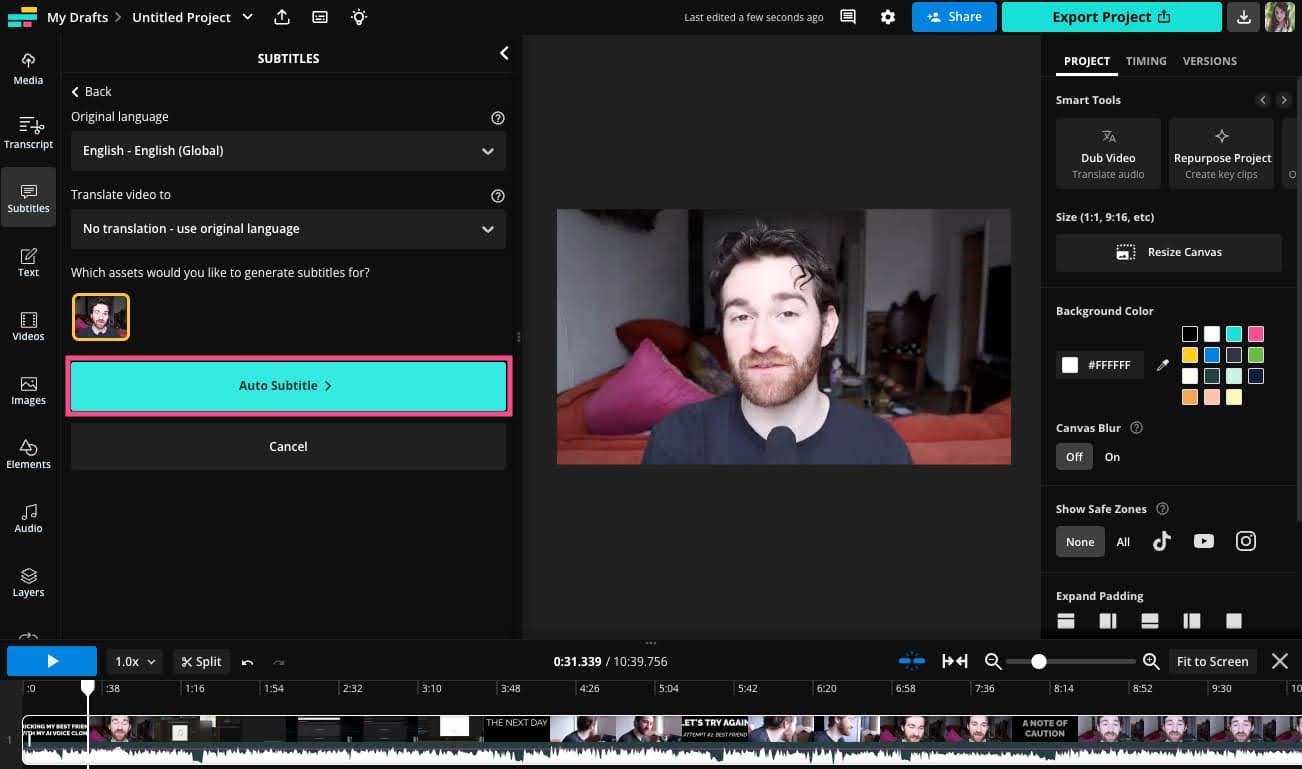
Then watch through the video and add in relevant, non-spoken audio cues to the captions. Kapwing’s subtitles are 100% customizable, so you can edit them just like a word document. Remember to follow closed caption writing best practices, like using brackets to indicate sound effects or background noises and adding in speaker identification where necessary.
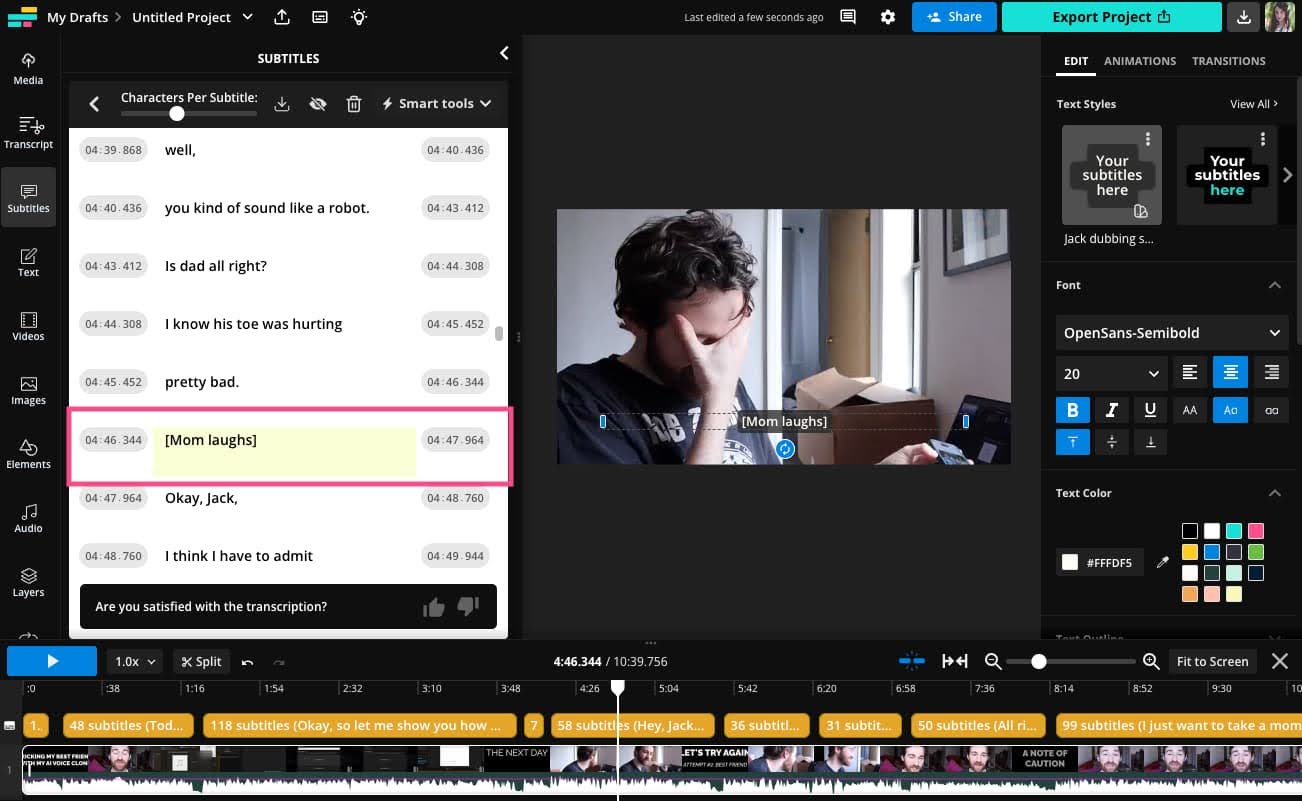
If you opt for the DIY route, bear in mind that you could be unintentionally leaving out important information. One way to correct for this is by using an evaluation service or tool to conduct an accessibility audit, like this tool from W3C.
However you choose to add them, including some form of closed captions or SDH subtitles is important for equal access for all viewers. Standard subtitles are, of course, better than nothing when it comes to social media video, but they still don’t meet WCAG standards for accessibility.
Should SDH subtitles be the new standard for social media captioning? The extra information included in SDH subtitles doesn’t degrade the viewing experience for hearing audiences, but it could make or break a video for someone in the deaf or hard of hearing community.









